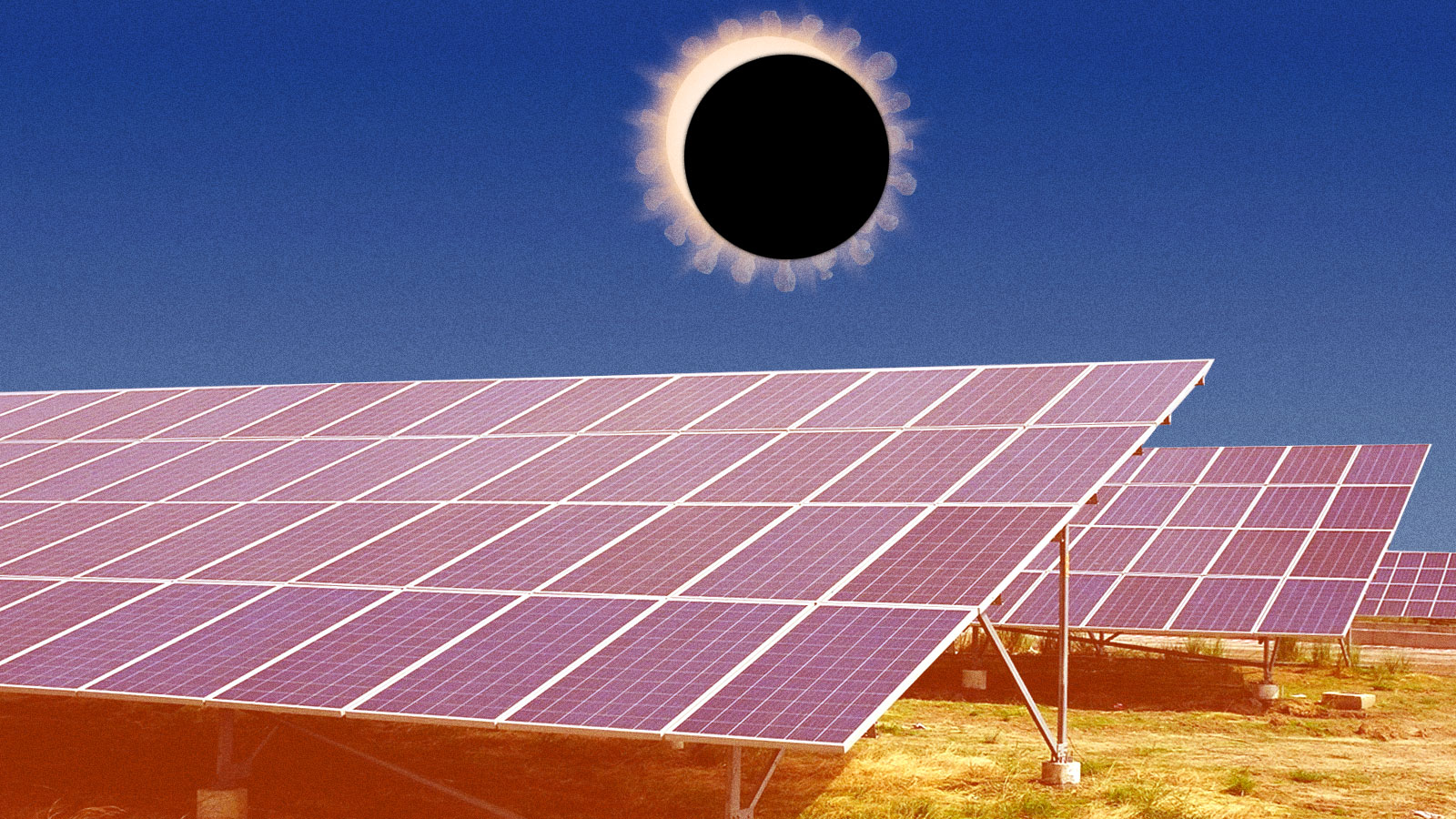Is it the best, or worst, of times for renewable energy? Under the shadow of COVID-19, it can be hard to discern the truth. Many experts say the clean-energy sector is tanking, with an estimated 500,000 newly unemployed workers by the end of June. On the other hand, solar power is flexing some serious sunshine right now, providing a larger percentage of the total energy mix than ever before. And in the first quarter of 2020, renewables were the only energy source to post a growth in demand: Globally, the market is projected to grow from $184.3 billion to $226.1 billion by 2021.
Which is it? Does the outlook for renewables represent the best of the worst in the flagging energy sector, or is the collapse of oil and coal allowing room for the new kid on the grid to shine?
We queried the experts, all of whom have been named to the Grist 50: Tim Latimer, Logan Atkinson Burke, Mateo Jaramillo, Daphany Rose Sanchez, and Emily Kirsch represent very different roles within the energy sector. Here are their takeaways about the renewables industry during the pandemic and beyond.
The following responses have been edited for length and clarity.
The solar industry forecast is partially cloudy

Emily Kirsch: Founder and CEO, Powerhouse
In the long term, I think the renewables industry is going to be fine. In most of the world, wind and solar are the cheapest forms of electricity, and that’s only going to continue. The growth of renewable power has definitely accelerated as a result of the collapse of oil prices. A Wall Street Journal article recently said that some of these oil companies see wind and solar assets as the haven in the coronavirus storm, especially in the eyes of investors, because of their steady returns — as opposed to losing money by investing in oil right now.
But I’d say it’s going to be a hard road ahead for sure. I think the companies my organization works with are a little bit sheltered because they’re focused on software — products that enable remote work in some form. But you know, clean energy is not just digital, it’s also physical infrastructure, and I think that’s where we will see harsher impacts of the pandemic on the industry. The Solar Energy Industries Association said that 55 percent of solar workers they’ve surveyed have been either cut back or laid off entirely. And they predict they could lose up to half of the quarter million people that work in the U.S. solar industry. The energy consulting group Wood Mackenzie forecasts that the solar market will be down about 18 percent in 2020.
Of course, the urgency behind transforming the energy sector has not changed. The International Energy Agency is predicting that the pandemic will result in an 8 percent drop in global carbon emissions — which is huge. But at the same time, we would need to do at least that every single year until 2030 to limit global warming to 1.5 degrees Celsius above pre-industrial levels. We can’t achieve that goal with the kind of economic shutdown that we’re experiencing now — because, obviously, this isn’t sustainable — so we will have to do it through a transition to renewables. Hopefully that transition will only be expedited as a result of the pandemic.
There’s an opportunity right now for a massive infrastructure investment plan that would upgrade electricity systems and public transportation, and electrify our industries. That could create immediate employment and long-term economic value, and shift the world to a low-carbon future.
Vulnerable communities are at a crossroads

Logan Atkinson Burke: Executive Director, Alliance for Affordable Energy
Being in the [renewables] space is still really exciting, because there has been so much momentum over the last couple of years. Here in Louisiana, for example, the New Orleans City Council recently committed to a 100 percent renewable and clean portfolio standard by 2040. I wouldn’t consider the plan perfect by any means — it still includes nuclear power, which I see as problematic — but it was a major win. In other words, renewable energy is not a niche kind of conversation anymore. Climate solutions are mainstream conversation. We’re not just the nerds in the corner.
From here, I believe we can go in one of two directions: We can either say we want to defend and protect the status quo, and not acknowledge all the ways in which the economy has been incredibly detrimental to young people and our future. Or we can find a way to properly transition our economy in a way that is both protective and resilient.
I have real fear that the “incumbent” energy systems are going to have the power to lobby to protect themselves. I want to be very clear that I’m not cheering for the death of jobs in those sectors. But oil- and gas-related jobs are a volatile way to make money these days. Over and over again, Louisiana’s reliance on nonrenewable energy has put those sectors — and therefore the state economy — into a boom–bust cycle. Are we going to just assume we’re going to keep booming and busting? Or are we going to join the rest of America, where wind and solar are two of the top industries for job growth, according to the U.S. Labor Department? That’s the choice that’s playing out right now.
Geothermal energy is looking up

Tim Latimer: Cofounder and CEO, Fervo Energy
There’s just so much that’s unprecedented about the current situation, it’s hard to do any planning for more than a couple of months out. But we’re seeing a really fast drawdown on oil and gas activity, and you’re not going to see employment return to those sectors.
For geothermal, this actually presents a really unique opportunity. Because we’re in the business of drilling wells, a lot of our supply chain is the same as oil and gas. And our costs are going to be a lot lower now because there’s less competition for equipment and services. Contractors are a lot more willing to pick up the phone and say, “Hey, what’s this geothermal thing that I haven’t thought about before,” just because they’re all trying to think about what’s new for their business.
If we develop and incentivize geothermal the right way, a lot of people can actually be put back to work. We’re working with a few different groups to try and get that message out there, about how we can pretty quickly put communities hit hard by the economic downturn back to work on long-term, clean infrastructure. If you’re somebody who’s really knowledgeable in terms of how to operate drilling rigs and pumps and cranes, then you can do that work in geothermal fairly easily.
If you’re going to talk about an economic recovery package that’s attentive to the workers of the oil and gas industry, it needs to think long term about what those workers will do. And that’s going to be building clean infrastructure. The 2009 Recovery Act put around $90 billion into the clean-energy economy, and it really created the U.S. solar industry, and also had huge impacts on wind and electric vehicles. And I think we’re at a similar place right now with industries like geothermal, carbon capture and transmission, and offshore wind — industries that share a lot of the same skill sets as oil-field work.
‘Nonessential’ solar companies are finding creative solutions

Daphany Rose Sanchez: Executive Director, Kinetic Communities Consulting
Every time something bad happens — a storm or a pandemic like COVID-19 — structural injustices get worse for communities of color and other marginalized populations. But there are messages and methodologies that can be used to “turn the dial,” and get the energy sector to start talking to sectors like affordable housing. I created my company with the purpose of doing just that — literally being a translator between nonprofits and engineers.
In the state of New York, energy efficiency, which includes renewables, is considered “nonessential” during COVID-19. That means contractors aren’t able to go out and do site assessments right now, and a lot of subsidy funding is frozen. So there’s essentially a standstill with our market in New York. But the New York City Housing Authority (NYCHA) has a goal to install 25 megawatts of solar by 2025. So we’re reaching out to some of our partners in the industry and seeing who will be hiring in the next six to eight months so that we can start providing a pipeline of residents for good quality jobs.
We’re also working with another partner to do free trainings for NYCHA residents. We’re doing a solar training, as well as Marketing 101 and Sales 101. That’s a critical part of our project, because we wanted to make sure that we can give something back to residents. A lot of times when folks engage that community, it’s a very extractive process. We told the housing authority that if we’re engaging the community, we want to do it in a way that is supportive of them.
The bigger picture remains unchanged

Mateo Jaramillo: Cofounder and CEO, Form Energy
There’s a lot of froth on the wave right now for renewables, but the tides haven’t turned for the industry, despite COVID-19. Keep in mind, the power industry does not operate on pandemic timescales. Most companies have already picked a path regarding how to orient their energy portfolios in relation to the climate crisis. Renewables projects are certainly getting some pushback right now, but by and large, the big utilities that we’re working with to transition from oil and gas to renewables intend to stay on the path they’re on. They don’t see a major change in strategy or tactics for this large energy transition, which is already underway. We expect it will continue for the next 10 or 20 years.
Rather than focus on the current fluctuations, I’d look at the major points of transition that are already in progress. Before the pandemic, oil and gas companies, mostly in Europe, had started buying into the electricity sector, because they see it as where the power need is going to come from in the future. If you electrify all the vehicles, guess what? You have to provide electricity. You no longer need to provide oil. Stakeholders are starting to see that moment of truth.
Another very real data point is from NextEra, a very large company out of Florida. They install a ton of utility-scale stuff, and they see basically no change to their plans for this year. I think that last week was their earnings call, and they’re slated to invest a billion dollars in storage next year.
One interesting dynamic to COVID-19 is that it puts even more pressure on older, inflexible assets, like coal, because the pandemic has resulted in a drop in demand. We still have 200 or so coal plants operating in the U.S., and those will almost certainly get retired sooner than anybody thought they would. But unlike coal power, you can’t turn renewables off: We’ve shut off all the other stuff, but you can’t shut off the sun. So, relative to demand, the new U.S. energy mix makes it look as if we just went out and installed a lot more wind and solar. And it’s giving a preview for what the future might look like, even when we’re back to normal.



